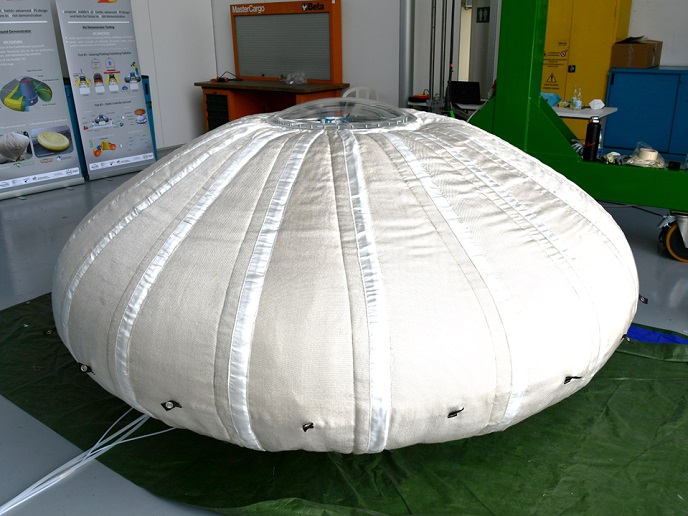A hot new idea for lightweight atmospheric entry protection
The EU’s ambitious plans for space exploration beyond low-Earth orbit over the next decade are focused on visiting the Moon and Mars. Making the most of these complicated missions will involve heavy and voluminous instrumentation and equipment for navigation, exploration and sampling. Advanced heat shields will play an essential role in mission safety and success. Current atmospheric entry systems use rigid heat shields with very large volumes and weights, imposing significant restrictions on payload capabilities. Inflatable heat shields (IHSs), with their intrinsically low weights and packing densities, will be a key enabler of future missions. The National Aeronautics and Space Administration (United States) is not the only team in the race anymore. The EU funded EFESTO(opens in new window) project Europe has advanced its own IHS, supporting space independence and European competitiveness.
Managing atmospheric entry at lower ‘cost’
As spacecraft barrel into the atmosphere at speeds of approximately 27 000 km/h, the rapidly compressed air at the leading edges reaches temperatures over 1 400 ⁰C. The heat shields(opens in new window) ensure the spacecraft and their payloads arrive safely to their destinations, both by slowing them down due to drag and by managing the tremendous heat generated during atmospheric entry. IHSs are composed of an external flexible thermal protection system and an internal inflatable structure that ensures the shape factor and load-carrying system withstand the aerodynamic pressure during entry. Both can be folded and packed into a smaller volume to be stowed inside a launch vehicle and inflated before entry. “IHSs pave the way for greater payload capability, offering the same drag area of a rigid heat shield but with much smaller mass and volume,” explains Giuseppe Guidotti of Elecnor Deimos Space(opens in new window) and EFESTO coordinator and project manager.
From mission scenario definition to demonstrator testing
Although the physics underlying IHS exploitation is established, IHS engineering requires complex modelling, innovative design solutions and demanding testing effort. “The EFESTO project addressed the full spectrum of the system engineering process. From mission scenario definition and use-case identification to system design, technology demonstrator design and testing in a relevant environment, we achieved remarkable success,” explains Guidotti. The project’s outcomes have increased the technology readiness level (TRL) of its novel IHS to TRL 4. “Crucial to success was the multidisciplinary effort supported by the tight interaction of highly skilled people and key players in the international space community,” Guidotti adds. EFESTO was led by Elecnor Deimos Space with key partners the German Aerospace Centre, the French Aerospace Lab, the Italian Aerospace Research Centre, the Polytechnic University of Turin and Aviospace. The Italian SME Aerospace Laboratory for Innovative Components and the Canadian company Thin Red Line Aerospace made valuable contributions.
New horizons for European space exploration
“EFESTO has surpassed expectations and opened the door to potential initiatives in Europe that would otherwise have been difficult to even consider,” states Guidotti. Not only has the dynamic team increased European knowledge and design capability of systems and missions relying on IHS; it has also revitalised European interest and engagement in the field of IHSs. “The project posed challenging objectives that have been successfully reached, allowing us to discover a ‘new world’ where only the United States had obtained meaningful results so far,” Guidotti concludes.



